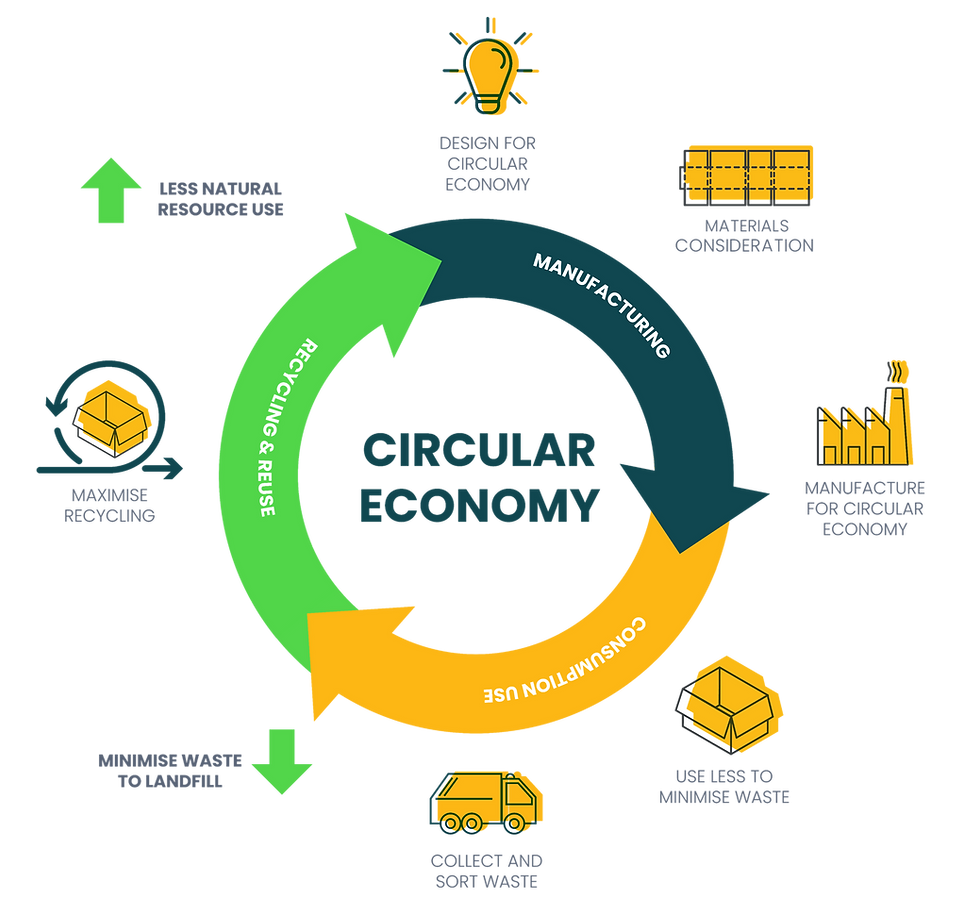Introduction to Eco-Modulated Fees
- Andrea Teslia

- Mar 27, 2024
- 3 min read
Updated: Apr 10, 2024
A tool that Extended Producer Responsibility (EPR) programs are using to incentivize environmentally preferable packaging materials is eco-modulated fees. Eco-modulated fees refer to a pricing strategy that incorporates environmental considerations into the cost structure of goods or services. The term suggests that fees or prices are adjusted based on the ecological impact or environmental performance of packaging material. By linking material pricing to environmental performance, companies are incentivized to examine what their product packaging is made of.
Material fees are determined by Producer Responsibility Organizations (PROs). While not 100% transparent, they are calculated by assessing factors like producer-supplied material volumes, recovery rates, material cost indices and commodity revenues. As an example, pictured below is Saskatchewan’s fee schedule for 2024.
#
For example, if a company analyzes its packaging inventory and discovers that it puts 60,000kg of Polystyrene (PS #6) containers into the consumer recycling stream – they are obligated to pay 60,000kg x 200¢ = $120,000. But what if they were to switch to a PET container? Now that calculation will be 60,000kg x 53¢ = $31,800. We would be remiss to ignore the differentiated cost of packaging. A PET (#1) container will cost more than a polystyrene (PS #6) container, so cost savings will not be the complete $88,200.
It is about finding a balance between profit and your company’s impact on the environment.
Why do eco-modulated fees matter?
What material a piece of packaging is made of matters because not all materials are created equal – some are more recyclable than others. Material identification is not something that we are taught in school, but we probably should be.
On the packaging of ‘recyclable’ materials, you will see what is known as a Möbius loop. An internationally recognized symbol, this chasing arrow symbol has a number inside of it, from 1 through 7. This number is used to identify which resin, or material, the product is made from.

The above Möbius loops have been colour-coded according to their ability to be recycled. With green being the most recycled, and red being the most likely to be incinerated or sent to landfill. And everything else falls somewhere in between. We will follow up with an entire post on resin identification.
The basic concept around eco-modulation is to penalize the use of less environmentally friendly materials with higher fee rates and to reward the use of materials with better sustainability credentials (for example easier to recycle, inclusion of recycled content etc. ) through fee reductions.So how do we making packaging more recyclable? There are many ways that this can happen, and why industry-promoted guidelines like the Golden Design Rules (GDR) exist. Almost all of them focus on increasing recyclability. For example, GDR 2: Remove Problematic Elements from Packaging. Sub bullets a-e catalogue hard(er) to recycle plastics which ‘contaminate’ the recycling stream. Link here to ‘Learn More’.
This GDR is also reflected in Éco Enterprise Québec’s (ÉEQ) Ecodesign Incentive on Recyclability. This incentive, along with four others, offer up to 50% credit against the designated material in scope. Get in touch to learn more!
More than just an inflated fee schedule for less desirable plastics, some Packaging EPR schemes go as far as to penalize the use of certain materials. For example, CITEO, France’s Packaging EPR program penalizes non-compliant producers for a variety of infractions which all centre on the impact on recycling infrastructure. For example:
+10% penalty on the contribution for materials that pose difficulties for integration into a flow (density of a PET<1 or a PE or PP>1, for example).
Penalty of +50% for the introduction of material which risks degrading the quality of the recycling batch. For example the presence of carbon black not detectable by optical sorting.
Penalty of +100% for the introduction of material which causes a risk of deterioration of the installations.
This type of penalty system, otherwise known as the ‘malus’ system has made its way to Québec as well. 2024 will be the first year that ÉEQ’s Schedule of Contributions will impose penalties for the use of Polyvinyl chloride (#3 PVC) and Polyactic acid (PLA) and other degradable plastics (#7 Other).

As recycling technologies continue to develop, there are many ways that recycling streams can become contaminated, ultimately disqualifying end-market bales for resale. If PROs are unable to find an end-market for these materials, that means costs go up for Producers. Similarily, if consumers don't know how to recycle your product's packaging, then these materials cannot be recovered - recovery that Producers are paying for. Using industry tools & guidelines, like the Golden Design Rules, can influence packaging design and its ability to successfully transit through the recycling stream.
As systemic efficiencies are realized, costs will go down. So, while Producers are feeling the squeeze on their chequebooks now, there are actionable steps you can take to minimize the negative financial impacts of certain material choices.






Comments